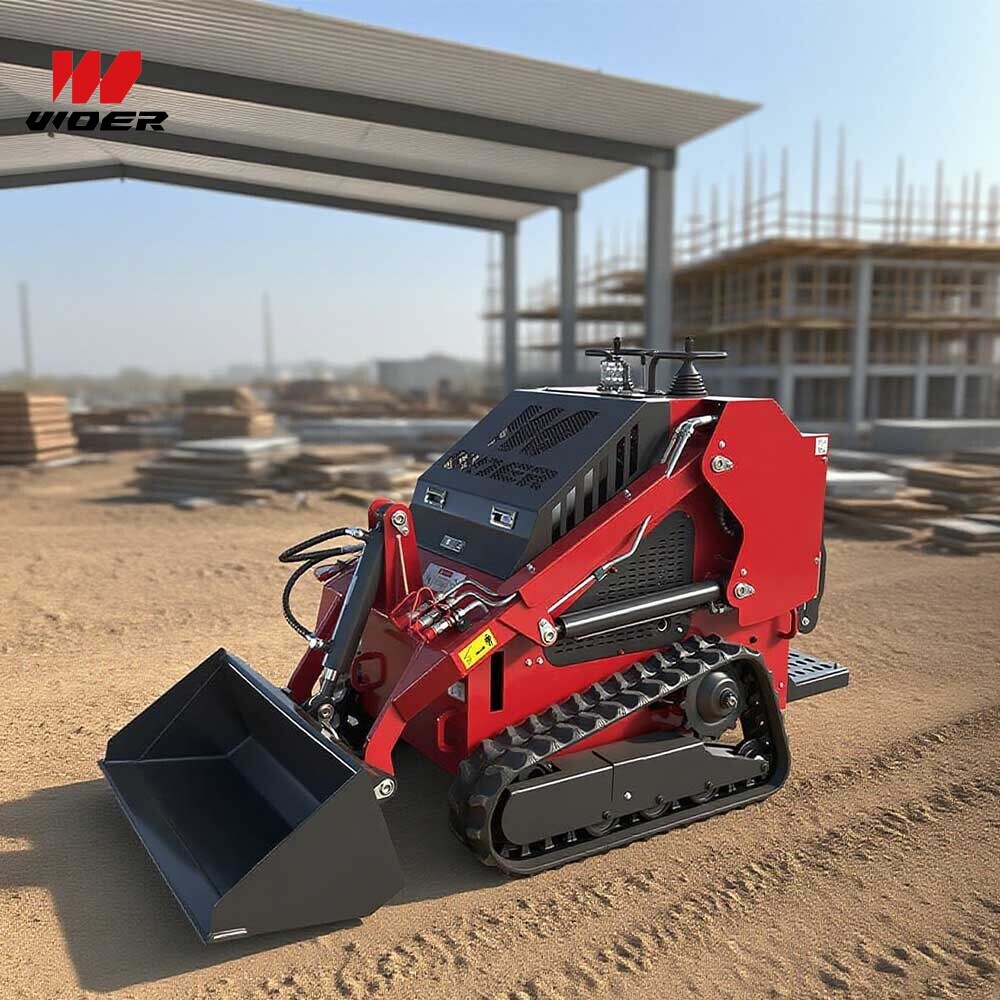Navigation
Contact us
Phone
Message

Choosing between a diesel mini tracked skid loader and a wheel mini skid steer loader is a strategic decision for wood-processing operations. This guide compares traction, uptime, operating costs and application fit to help technical evaluators, operators and procurement teams select the right compact skid loader for their needs.
Key differences at a glance
At a high level, the diesel mini tracked skid loader prioritizes traction and ground protection, while wheel mini skid steer loader designs deliver higher transport speed and lower initial cost. Understanding these contrasts—especially when evaluating skid steer loader equipment for sawmill yards, log handling, or mill maintenance—prevents costly mismatches between machine capability and jobsite requirements.
Core attributes
- Mobility: Wheel mini skid steer loader — faster on hard surfaces, easier road transfer.
- Traction & flotation: Track mini skid steer loader — superior in mud, soft soils and uneven woodlot terrain.
- Ground impact: Diesel mini tracked skid loader — lower PSI and less turf/root damage, important for log yard prepping or forest edging.
- Maintenance profile: Wheeled units often have simpler tire maintenance; tracked machines require undercarriage checks and tensioning.
Performance & operational suitability
For wood-processing facilities, the decision is usually governed by jobsite surface and seasonal conditions. A compact skid loader with tracks is more predictable when loading wet bark, moving stacks across uneven ground, or working in yards after rain. Conversely, a mini skid steer front loader on wheels excels for material handling inside paved yards, moving pallets, and applications requiring frequent short-distance travel.
Technical comparison (practical metrics)
Cost of ownership: Beyond the sticker price
Decision-makers and financial approvers should evaluate total cost of ownership (TCO): fuel consumption for diesel mini tracked skid loader models, undercarriage replacement intervals, downtime for repairs, and the salvage/resale market. While a shandong skid steer loader option on wheels might be cheaper to buy, a tracked variant can preserve productivity and reduce rework or ground remediation costs—especially in wet seasons.
Common applications in wood processing
Examples where tracked mini skid loaders outperform wheeled units include:
- Stacking and repositioning heavy logs on soft, rutted yard surfaces.
- Site cleanup where ground preservation matters, such as nursery-adjacent operations.
- Accessing forested lot edges for timber delivery or boundary clearing.
Wheeled mini skid steer loader models are often preferred for:
- Pallet and crate handling in paved mill yards.
- Fast internal transfers and tasks that require regular on-road towing.
Standards, safety and compliance
When selecting skid steer loader equipment, reference applicable safety and component standards: ISO standards for machinery safety, EN norms for guarding and stability, and local emissions limits for diesel engines. For attachments used in wood processing—grapples, mulchers or log forks—confirm conformity with ASTM or JIS strength and fatigue requirements where relevant. Proper certification reduces procurement risk and supports insurance/compliance reviews.
Maintenance planning & lifecycle management
Operators should adopt a preventive maintenance plan that includes daily checks (track condition, hydraulic leaks), scheduled undercarriage servicing for tracked models, and tire inspections for wheel mini skid steer loader machines. Track tension and sprocket wear are common failure points on track mini skid steer loader variants; documenting intervals and spare-part lead times is essential to maintaining throughput.
Procurement checklist and financing tips
- Define jobsite profiles: surfaces, average loads, seasonal conditions.
- List must-have attachments (e.g., mini skid steer front loader, log grapple) and confirm compatibility with skid steer loader equipment couplers.
- Request lifecycle cost projections: fuel, consumables, and anticipated downtime.
- Consider vendors offering bundled services: on-site training, spare parts kits, and warranty terms aligned with operating hours.
For buyers seeking competitive offers, phrases like "free shipping cheap mini skid steer loader this" may surface in sourcing searches; nonetheless, prioritize vendor reliability and after-sales support over headline pricing to avoid hidden costs.
Case insight: mixed fleet strategy
Many wood-processing sites adopt a mixed fleet: a diesel mini tracked skid loader for yard prep and wet-season work, plus a wheel mini skid steer loader for quick material transfers. This hybrid approach optimizes both capital and operational spending while ensuring the right tool is available for each task.
Product integration example
For perimeter mowing, site grading, or low-impact vegetation control near log yards, consider complementary equipment such as Rubber Track Grass Off Road Lawn Mower Robot Electric Smart which demonstrates how rubber track solutions can reduce ground damage while extending access in soft terrain. Integrating tracked ancillary units with a track mini skid steer loader simplifies ground-sensitive operations and reduces recovery effort.
Common misconceptions clarified
Misconception: "Tracked always equals better." Reality: Tracked models outperform on soft terrain but can cost more to maintain; wheel models are preferable for paved, high-speed site movement. Misconception: "Wheels are always cheaper total cost." Not necessarily—if downtime or ground remediation is frequent, a tracked unit may reduce TCO.
Decision framework for stakeholders
Technical evaluators should score options across traction, maintenance accessibility, attachment compatibility, and emissions. Business and procurement teams must overlay TCO, vendor support, warranty terms, and supplier location (for example, China skid steer skid steer loader vendors vs local distributors) to finalize purchases. Operators and contract executors must be consulted early to ensure chosen models meet day-to-day realities.
Why choose us / Next steps
We combine industry experience, equipment knowledge and support capabilities to help you select the optimal skid steer loader—be it a diesel mini tracked skid loader or wheel mini skid steer loader. Contact our specialists for a site assessment, demo scheduling, and a tailored ROI analysis that addresses uptime, maintenance, and financing preferences. For inquiries, request a quote and parts availability from our team to streamline procurement and deployment.

This stunning beach house property is a true oasis, nestled in a serene coastal community with direct access to the beach.
Contact
West Street, Melbourne Victoria 3000 Australia